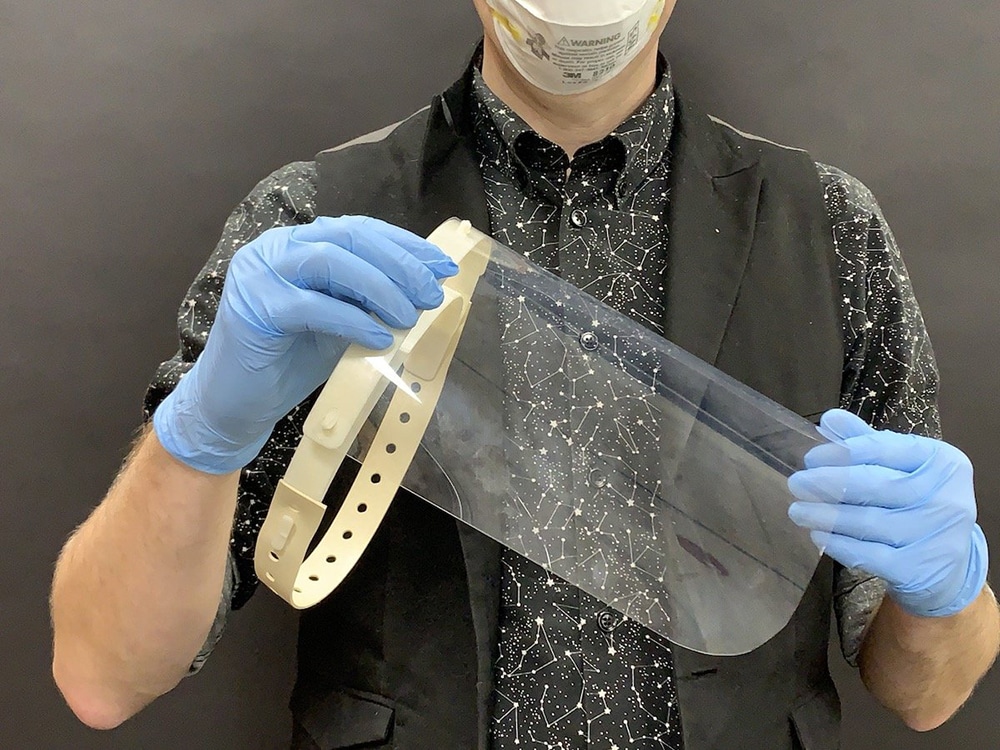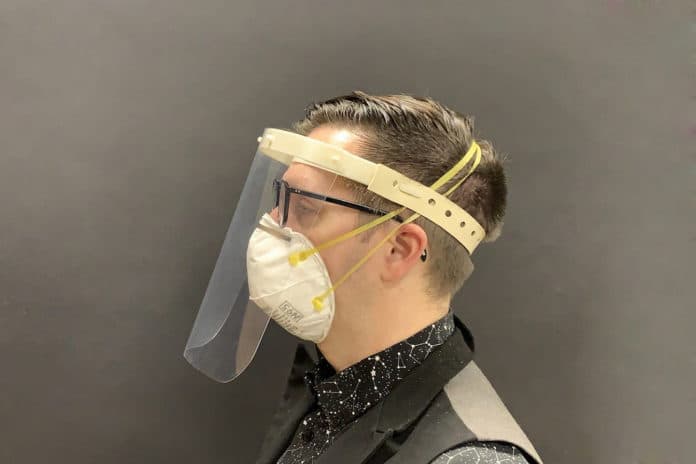With COVID-19 infection rates increasing every day around the world, the demand for masks and face shields is also skyrocketing. The highest priority is to provide protective equipment for health workers to deal directly with patients with COVID-19 infection.
In this situation, many companies and researchers are coming together to present their innovative and reusable masks design ideas. Recently, a researcher team at Penn State Behrend and Case Western Reserve University has teamed up with manufacturing companies in Erie and Ohio to produce face shields for medical professionals who are treating COVID-19 patients.
The officials believe that they can produce 5,000 face shields per day, beginning April 9. Jason Williams, an assistant teaching professor of engineering at Penn State Behrend, helped design a new COVID-19 face shield that will be produced in Akron, Cleveland, and Erie, Pennsylvania.

He and his team used the open-source designs protective face shields, which was configured for use on a 3D printer, to be adapted for injection molding. According to the researchers, the injection molding technique would allow companies to scale up their production of the protective shields. They then modified an open-source design for a plastic face shield with a polypropylene frame and a rubber strap.
The new COVID-19 face shield design, based on the Prusa Face Shield, creates a shield that is thinner (thickness from 0.18 to 0.5 millimeters), with components that can be cut using die machine. That reduces the cutting time from 30 seconds to less than one second. Using a polypropylene frame creates even more efficiency, while the injection molding cuts the build time to less than 40 seconds. With 3D printers, it takes three hours per frame. Additionally, since it uses polypropylene, it is easier to clean and safe to reuse the shield.
Besides, the new face shield design can be sterilized in a medical autoclave, which is standard equipment in most medical settings.
“We knew there was a critical need for protective wear that could be quickly assembled and mass-produced,” said Bill Rabbitt, an engineer at Nottingham Spirk, a Cleveland-based product design company. “We were able to assemble a team that could make this a reality in less than a week.”
Williams, Charnas, and Rabbitt are making their patterns and downloads available to the public at no charge.
